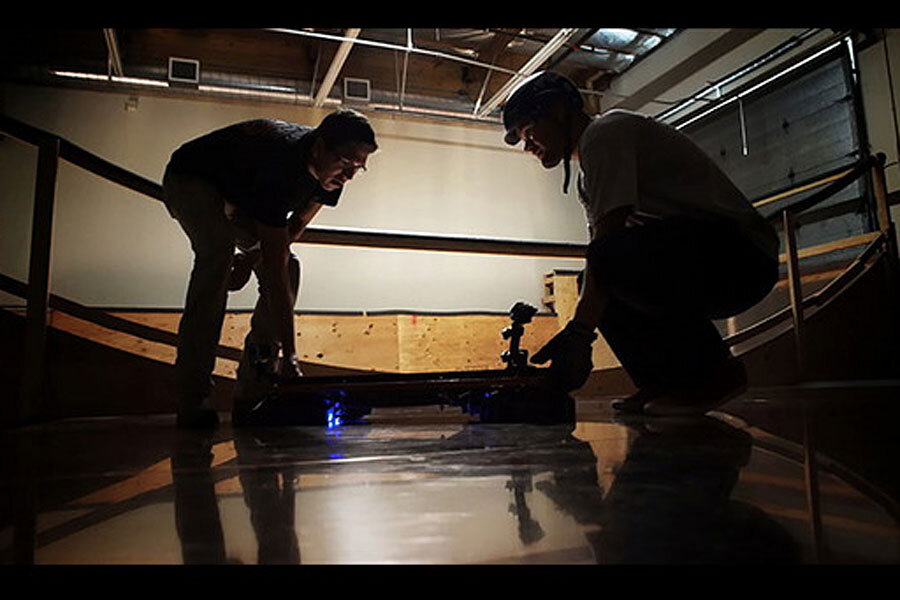Why NASA wants to bring hoverboard technology to space
Loading...
It's a vision of the future that may even have eluded Marty McFly: hoverboard tech in space.
NASA wants to make this vision a reality, and soon. The space agency is teaming up with California-based company Arx Pax, which has developed a real-life hoverboard using a technology called Magnetic Field Architecture (MFA).
The collaboration — which takes the form of a Space Act Agreement — aims to find a way to manipulate tiny satellites called cubesats without actually touching them.
"Arx Pax and NASA will work together to design a device with the ability to attract one object to another from a distance," Arx Pax representatives said in a statement today (Sept. 2). "The device will draw, as well as repel, satellites at the same time, meaning it will hold a satellite at a distance and won't allow it to move away or toward the capture device. This will enable the capability to capture, and possibly manipulate, microsatellites or other objects without making physical contact with them." [Science Fiction or Fact? 10 Out-There Concepts]
Arx Pax has built MFA tech into engines that create and manipulate magnetic fields, allowing them to hover over conductive surfaces. One such "hover engine" drives Arx Pax's Hendo Hoverboard, which was introduced in October 2014.
The same principle can theoretically be applied to move and control cubesats, which can be smaller than a cereal box. (The basic building blocks of cubesats are "units" that measure 4 inches, or 10 centimeters, on a side. "3U" cubesats are the size of three of these units put together, 6U cubesats are as big as six of them, and so on.)
But a space-based hover engine wouldn't draw spacecraft in from far away like a tractor beam from "Star Trek."
"We're talking on the scale of centimeters," Arx Pax co-founder and CEO Greg Henderson told The Verge.
The company and NASA plan to develop a prototype of the cubesat-moving device over the next couple of years, The Verge reported.
Follow Mike Wall on Twitter @michaeldwall and Google+. Follow us @Spacedotcom, Facebook or Google+. Originally published on Space.com.
- The Top 10 Star Trek Technologies
- Hyperloop, Jetpacks & More: 9 Futuristic Transit Ideas
- Star Trek's Warp Drive: Are We There Yet? | Video
Copyright 2015 SPACE.com, a Purch company. All rights reserved. This material may not be published, broadcast, rewritten or redistributed.





